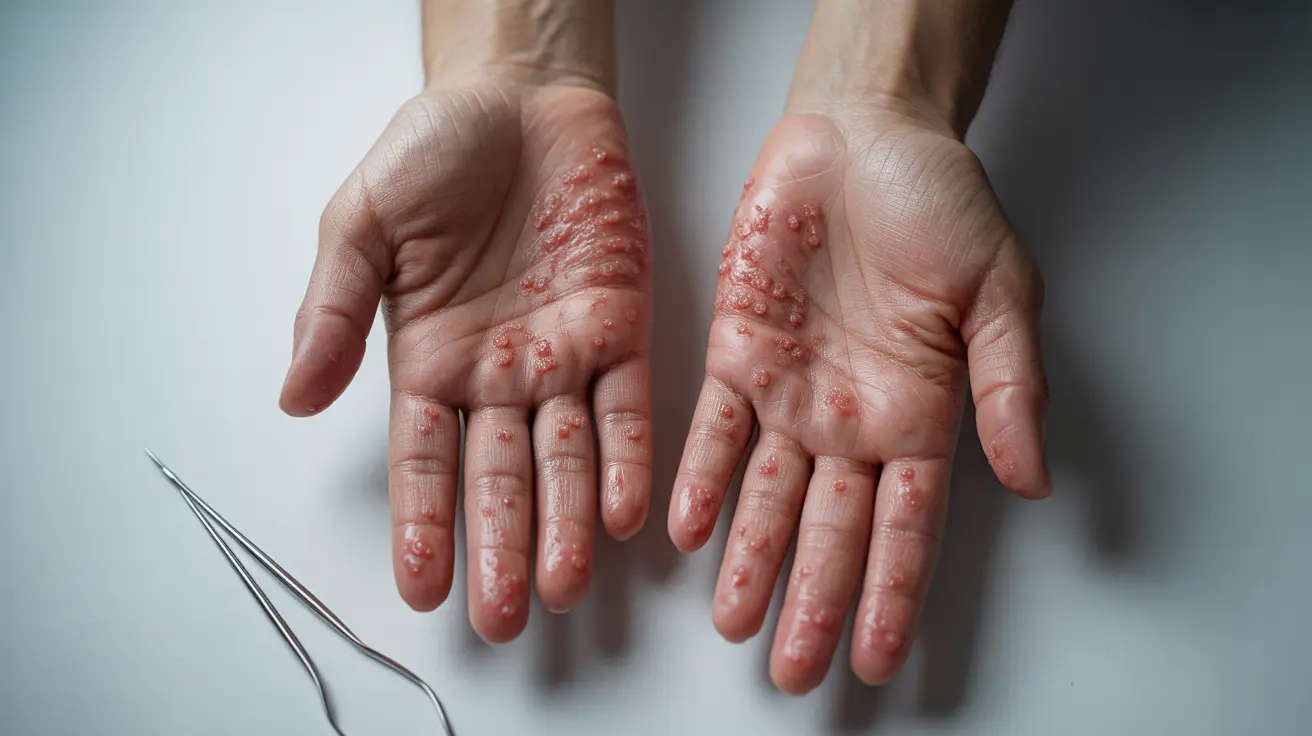Hand eczema can be a challenging and uncomfortable skin condition that affects millions of people worldwide. Understanding how to identify, manage, and treat this condition is crucial for those experiencing its symptoms. This comprehensive guide will help you recognize the signs of hand eczema and learn effective strategies for relief.
Understanding Hand Eczema Symptoms
Hand eczema typically manifests with distinct visual characteristics that can help in identification. Common symptoms include:
- Red, inflamed patches of skin
- Dry, scaly areas
- Small, fluid-filled blisters
- Cracking and peeling
- Deep fissures in the skin
- Intense itching and burning sensations
The appearance can vary significantly depending on the type of eczema and the severity of the condition. In severe cases, the skin may become thick, leathery, and develop deep painful cracks that can bleed.
Common Types of Hand Eczema
Contact Dermatitis
This type occurs when the skin comes into direct contact with irritants or allergens. It often appears as red, itchy patches in areas that have touched triggering substances.
Dyshidrotic Eczema
Characterized by small, intensely itchy blisters that typically appear on the edges of fingers, palms, and sometimes toes. These blisters can be particularly uncomfortable and may take several weeks to heal.
Atopic Dermatitis
This chronic form of eczema often begins in childhood and can persist into adulthood. It typically causes dry, scaly patches and intense itching, particularly on the backs of hands.
Triggers and Risk Factors
Understanding what triggers hand eczema is crucial for managing the condition. Common triggers include:
- Frequent hand washing or wet work
- Exposure to harsh chemicals and cleaning products
- Cold, dry weather
- Stress and anxiety
- Certain metals, especially nickel
- Latex gloves
- Fragranced products
Treatment and Management Strategies
Medical Treatments
Several medical interventions can help manage hand eczema:
- Topical corticosteroids for inflammation
- Prescription barrier creams
- Phototherapy for severe cases
- Oral medications for extensive flare-ups
Home Care Approaches
Effective home management strategies include:
- Regular use of fragrance-free moisturizers
- Wearing cotton gloves under rubber gloves when cleaning
- Using lukewarm water for washing hands
- Patting hands dry instead of rubbing
- Applying moisturizer immediately after washing
Prevention Tips
Preventing flare-ups is easier than treating them. Key preventive measures include:
- Identifying and avoiding personal triggers
- Maintaining good skin barrier function through regular moisturizing
- Using gentle, fragrance-free soaps
- Protecting hands with gloves in cold weather
- Taking breaks from wet work when possible
Frequently Asked Questions
- What are the common symptoms and visual signs of eczema on the hands?
Hand eczema typically presents with red, dry, and itchy skin, often accompanied by scaling, cracking, and sometimes small, fluid-filled blisters. The skin may become thick and leathery over time, and deep painful fissures can develop.
- What triggers or causes hand eczema to flare up or worsen?
Common triggers include frequent hand washing, exposure to chemicals, cold weather, stress, certain metals (especially nickel), latex gloves, and fragranced products. Individual triggers can vary significantly among people.
- How can hand eczema be effectively treated or managed at home and with medical care?
Treatment involves a combination of medical interventions like topical corticosteroids and proper home care, including regular moisturizing, trigger avoidance, and protective measures such as wearing appropriate gloves. Severe cases may require prescription medications or phototherapy.
- What types of eczema commonly affect the hands, and how do their symptoms differ?
The main types are contact dermatitis (triggered by specific substances), dyshidrotic eczema (characterized by small blisters), and atopic dermatitis (chronic, often beginning in childhood). Each type has distinct patterns and triggers.
- How can I prevent hand eczema from recurring or getting worse, especially with frequent hand washing?
Prevention strategies include using gentle cleansers, moisturizing immediately after washing, wearing protective gloves when necessary, identifying and avoiding triggers, and maintaining good skin barrier function through regular care and protection.




